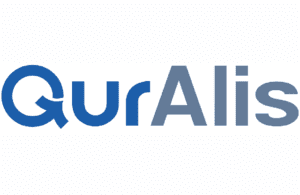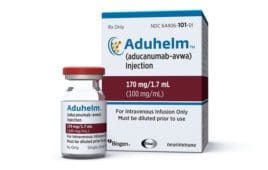 Cambridge, Massachusetts-based QurAlis has dosed the first patient with the biotherapeutic QRL-201 in a Phase 1 clinical trial (ANQUR) in Canada. QRL-201 is a novel therapy targeting the restoration of STATHMIN-2 (STMN2) expression in amyotrophic lateral sclerosis (ALS) patients. QurAlis believes ANQUR the first study to evaluate such a treatment.
Cambridge, Massachusetts-based QurAlis has dosed the first patient with the biotherapeutic QRL-201 in a Phase 1 clinical trial (ANQUR) in Canada. QRL-201 is a novel therapy targeting the restoration of STATHMIN-2 (STMN2) expression in amyotrophic lateral sclerosis (ALS) patients. QurAlis believes ANQUR the first study to evaluate such a treatment.
Stathmin-2 (STMN2), also known as superior cervical ganglia neural specific 10 (SCG10), belongs to the stathmin protein family involved in the regulation and dynamics of microtubules. Predominantly expressed in neurons, STMN2 serves key functions in neuronal development, axonal growth and regeneration.
Recent research has revealed the significance of STMN2 in neurodegenerative diseases, especially ALS and frontotemporal dementia (FTD). Researchers have linked the pathogenesis of those conditions to the loss of STMN2 function.
“In mice, STMN2 deletion causes axonal degeneration and loss of muscle innervation, which is the primary functional deficit that leads to paralysis in ALS patients,” said Kasper Roet, founder and CEO of QurAlis. “We therefore believe that restoring STMN2 expression can protect against nerve degeneration and muscle denervation and protect against paralysis and thereby improve patient outcomes.”
ANQUR study aims to assess safety and efficacy of QRL-201 in combatting neurodegeneration

Kasper Roet
The first participant in the ANQUR study received the treatment at the University of Montréal Hospital Centre (CHUM). The trial aims to assess the safety, tolerability and pharmacokinetics of QRL-201 compared to a placebo in ALS patients. A total of 64 participants are expected to be involved across sites in Canada, the U.S., the UK, Belgium, the Netherlands, Italy, Germany and Ireland.
STMN2, also known as SCG-10, is vital for microtubule stabilization, a core component of cells and axons’ cytoskeleton.
QurAlis co-founder and former Harvard professor Kevin Eggan discovered in 2019 that STMN2 expression is regulated by TDP-43. His research revealed that the loss of normal TDP-43 function causes a significant decrease in STMN2 expression and impairment in neuronal repair, which can be reversed by restoring STMN2 levels.
“The loss of STMN2 is present in nearly all ALS patients and the loss of STMN2 is functionally very strongly aligned with the ALS disease phenotype,” Roet emphasized. “It is also mechanistically linked to the ALS hallmark of TDP-43 pathology. We think this is therefore a very promising therapeutic approach and differs on these properties from other investigational treatments.”
QurAlis explores potential of STMN2 therapies for ALS, FTD, and Alzheimer’s patients
Addressing TDP-43 pathology could hold promise for conditions beyond ALS. “Besides primary lateral sclerosis, TDP-43 dysfunction is also relevant for approximately 50% of FTD and about 30% of Alzheimer’s disease (AD) patients,” Roet said. “The unfortunate FTD diagnosis of Bruce Willis has once again highlighted the urgent need for therapies. STMN2 is also dysregulated in FTD and AD and we therefore plan to bring much needed STMN2 therapies forward for FTD patients and potentially for AD patients as well.”
Currently, there are no cures for ALS or FTD, and limited therapeutic options exist for these patients who desperately need effective treatments. QurAlis is working on developing proprietary platforms and unique biomarkers to advance their research in this area.
“We have developed proprietary fluid mRNA and protein biomarkers for STMN2 that we plan to use to measure target engagement and potentially for responder analysis,” Roet said. “With collaborators we are also developing a robust electrophysiology platform to precisely measure nerve conduction and muscle innervation which is lost in ALS patients.” The company also plans to combine those readouts with efficacy biomarker measurements and functional measurements. “We have also developed a proprietary and innovative FlexASO backbone technology to improve potency and biodistribution and to increase the therapeutic index,” Roet said. It believes FlexASO is a promising new technology for the development of effective ASO therapies for several neurodegenerative diseases including ALS and FTD.
The company recently received $88 million in funding to develop ALS product candidates QRL-201 and QRL-101.
Filed Under: Neurological Disease



